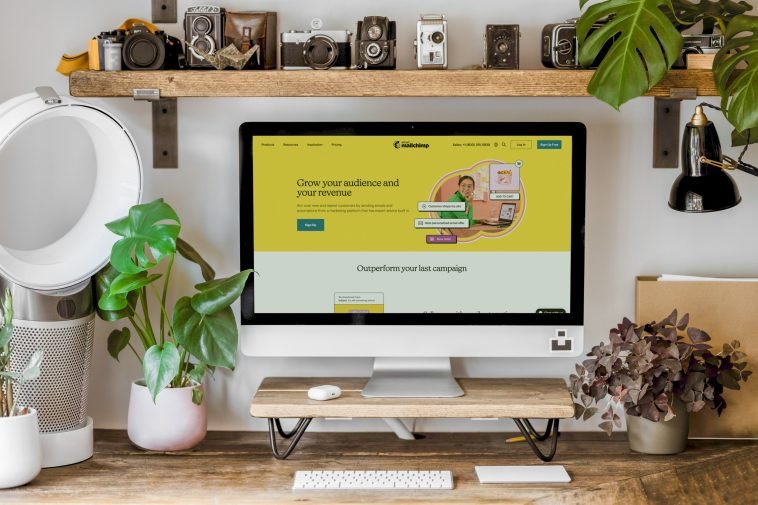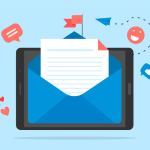Introduction.
Email marketing isn’t just for blasting out promotions; it’s one of the most powerful tools for building lasting customer relationships and driving consistent lead generation.
When used right, email marketing can be your business’s most cost-effective and rewarding way to connect with potential clients and turn them into loyal customers.
Generating leads is about sparking interest in people who might need what you offer. But how do you get those interested individuals to open, read, and respond to your emails?
This article covers every angle of email marketing for lead generation—whether you’re a small business owner, a freelancer, or just diving into marketing, this is for you.
I’ll walk through the basics of why email marketing is so effective for lead generation, how to plan an email strategy, tools and best practices, and even the common challenges (and ways to overcome them).
Plus, I’ll answer some common questions at the end, so by the time you finish reading, you’ll have the tools to start generating leads like a pro.
Why Use Email Marketing for Lead Generation?
Email marketing is uniquely personal and direct, allowing businesses to reach potential customers in their inboxes, a space they often check daily.
Email marketing’s lead generation potential is particularly impressive when you consider that, according to a 2023 report, it has an average ROI of $42 for every $1 spent—one of the highest ROIs of any marketing channel.
In a world full of social media posts, ads, and notifications, emails have an advantage: they’re delivered directly to people who’ve already shown an interest in your brand by subscribing.
Unlike social posts, email content doesn’t have to compete for attention in the endless scroll; it’s a one-on-one communication channel that invites more direct interaction.
How Do I Generate Leads Through Email Marketing?
1. Build a Targeted Email List.
A targeted email list is essential. You’ll want to attract subscribers who are genuinely interested in what you have to offer, and there are several ways to do this. Some popular methods include:
- Adding sign-up forms on your website
- Offering something of value in exchange for an email (like a free ebook, discount, or webinar)
- Encouraging people to sign up via social media
By capturing emails from those interested in your brand, you create a ready-made pool of potential leads who are more likely to convert.
2. Craft Irresistible Subject Lines.
The subject line is the first thing your potential lead sees, and it’s often the deciding factor on whether they open your email or not. A strong subject line should be:
- Short and clear (try to keep it under 50 characters)
- Benefit-focused (“Get Your Free Guide to Better Productivity”)
- Personalized when possible (adding the recipient’s name can increase open rates by 26%)
The subject line’s job is to entice, so keep experimenting and tracking which styles perform best.
3. Provide Value with Every Email.
Once someone opens your email, make sure the content matches the promise of the subject line and provides real value. Here’s how:
- Educational Content: Tips, how-to guides, and insights that align with your audience’s interests.
- Exclusive Offers: Discounts, early access, or other perks for subscribers.
- Engaging Stories: Share relatable stories that connect to your brand and resonate with your audience.
With valuable content, people are more likely to keep opening your emails and ultimately convert into leads.
4. Use Clear Calls to Action (CTAs).
A good CTA tells the reader exactly what to do next, whether it’s “Download your free guide,” “Sign up for our webinar,” or “Claim your discount now.” Your CTA should stand out visually, be short and to the point, and fit naturally with the content.
Try not to overwhelm the reader with multiple CTAs; instead, focus on one key action per email.
5. Segment Your Audience.
Not all subscribers are alike. Segmenting allows you to tailor your content to specific groups, such as new subscribers, engaged readers, or those who haven’t opened an email recently. Segmented emails can lead to an increase in revenue by up to 760%, according to a 2020 report by Campaign Monitor.
Common segmentation categories include:
- Demographics (age, location, etc.)
- Interests (based on previous engagement)
- Purchase History (for existing customers)
6. Measure and Optimize Your Campaigns.
Tracking and analyzing metrics such as open rates, click-through rates, and conversions is essential.
Most email marketing platforms offer built-in analytics, so make sure you’re reviewing the data after each campaign.
Pay attention to what’s working and where you can improve. For example, if your open rate is low, revisit your subject lines. If click-throughs are underwhelming, it might be time to refine your CTAs.
Pros and Cons of Using Email Marketing for Lead Generation
Pros:
- Cost-Effective: With a high ROI, email marketing is budget-friendly for most businesses.
- Personalized Communication: Allows businesses to send tailored messages directly to individual users.
- High Reach: Many people use email daily, providing a reliable way to reach your audience.
Cons:
- Requires Regular Maintenance: Email lists need to be cleaned and managed to remove inactive subscribers.
- Risk of Spam: Poorly crafted emails may end up in spam folders, reducing reach.
- Time-Consuming: Crafting quality emails, especially for segmented lists, takes time and effort.
FAQs
Q: How often should I send emails for lead generation?
A: Start with once a week, and then experiment. Some audiences prefer frequent updates, while others respond better to monthly emails. Regular testing will help you find the balance that works best.
Q: Should I buy an email list to generate leads?
A: No, it’s not recommended. Purchased lists often contain unqualified leads who didn’t consent to receive emails from you, which can harm your deliverability and reputation. Building a list organically, even if slower, leads to higher-quality leads.
Q: How can I prevent my emails from going to spam?
A: Avoid spammy language, keep your list clean by removing unengaged users, and always include an easy-to-find unsubscribe option. Authenticity and transparency go a long way in keeping your emails out of spam folders.
Q: What are some tools to help with email marketing?
A: There are many great tools available, depending on your budget and needs. Mailchimp, ConvertKit, and Constant Contact are popular options that offer user-friendly features for creating, sending, and analyzing email campaigns.
Q: Can I generate leads without a big marketing budget?
A: Absolutely! Email marketing is cost-effective, and with the right strategy, even a small budget can yield great results. Focus on high-value content and segmenting your audience for the best results.
Final Thoughts
Email marketing offers a powerful and personalized way to generate leads for any business size. By understanding your audience, crafting compelling content, and testing strategies, you can build a lead generation system that’s both effective and affordable.
Are you ready to start experimenting with your own email campaigns and see what works best for your unique audience?





GIPHY App Key not set. Please check settings